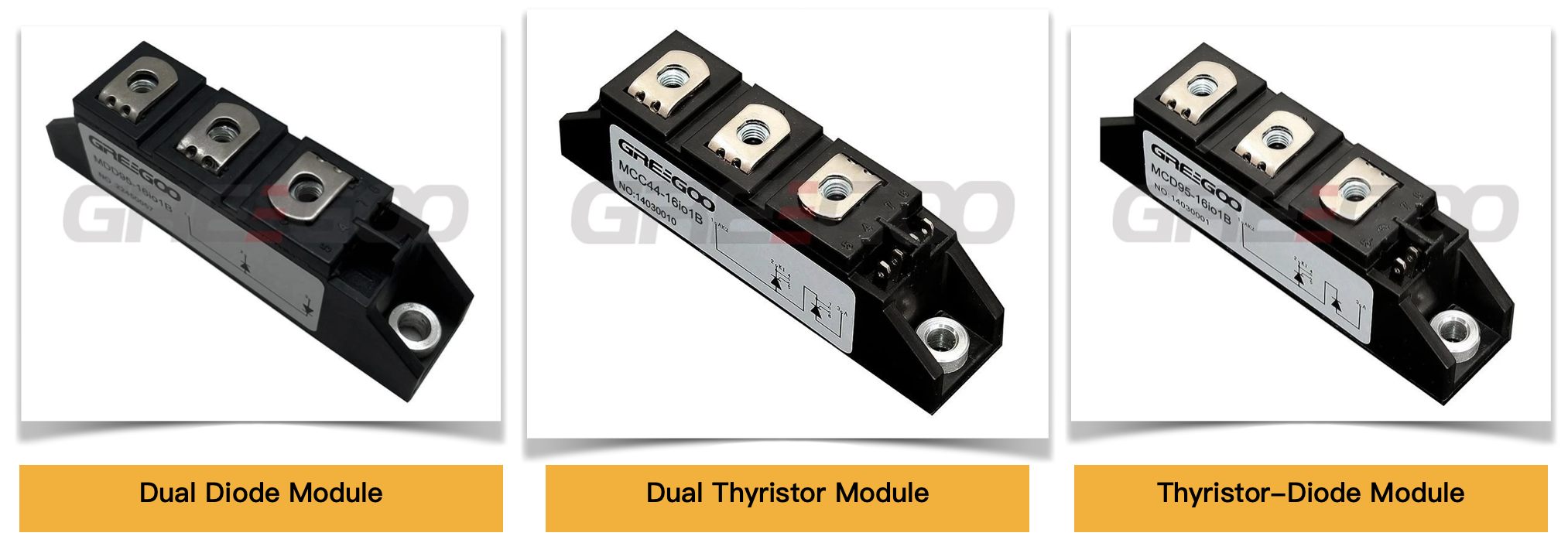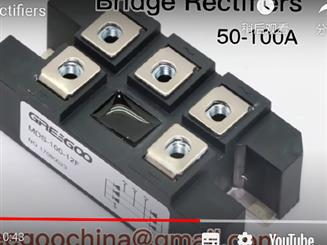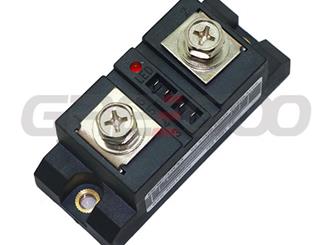𝐃𝐢𝐟𝐟𝐞𝐫𝐞𝐧𝐜𝐞 𝐁𝐞𝐭𝐰𝐞𝐞𝐧 𝐃𝐮𝐚𝐥 𝐓𝐡𝐲𝐫𝐢𝐬𝐭𝐨𝐫 𝐌𝐨𝐝𝐮𝐥𝐞 𝐃𝐮𝐚𝐥 𝐃𝐢𝐨𝐝𝐞 𝐌𝐨𝐝𝐮𝐥𝐞 𝐚𝐧𝐝 𝐓𝐡𝐲𝐫𝐢𝐬𝐭𝐨𝐫-𝐃𝐢𝐨𝐝𝐞 𝐌𝐨𝐝𝐮𝐥𝐞
In terms of internal structure, the differences between dual thyristor modules, dual diode modules, and thyristor-diode modules mainly lie in the semiconductor devices they contain and their connection methods:

Dual Thyristor Module:
Internal Structure: Contains two thyristors (SCRs), usually in an anti-parallel or anti-series configuration.
Function: Each thyristor can be controlled individually, used for phase control and rectification in AC circuits. The anti-parallel configuration allows control during both the positive and negative half-cycles of AC power.
Dual Diode Module:
Internal Structure: Contains two diodes, typically connected in a common cathode or common anode configuration.
Function: Used in rectifier circuits, where the two diodes handle the positive and negative half-cycles of AC power, forming full-wave rectification.
Thyristor-Diode Module:
Internal Structure: Contains one or more thyristors and diodes, with specific connection methods depending on application requirements.
Function: Combines the control capability of thyristors with the rectification function of diodes, suitable for circuits requiring both rectification and control.
The design of these modules' internal structures provides specific advantages in different power electronics applications, and the choice should be made based on the specific circuit requirements.

12KV Vacuum Contactor with Vacuum Circuit Breaker Integrated - Frequent Switching under Higher Breaking Capacity 31.5kA
12KV 630A to 1250A 31.5KA Vacuum Contactor + Vacuum Circuit Breaker, frequently switching under high breaking capacity
Read More
Greegoo's Arc Fault Circuit Interrupter (AFCI) detects arc faults and de-energizes the circuit before a fire can start, is coming soon.
Greegoo's combination AFCIs electronically identify unique current and voltage characteristics of all arc faults and de-energize the entire circuit when one occurs.
Read More
Bridge Rectifier Modules, Diode Bridge Rectifiers
Greegoo's rectifier bridge covering single three/3 phase full wave bridge rectifier, diode bridge, ac to dc rectifier. Diode bridge module, good replacement of IXYS, Semikron, Powerex, Vishay and Crydom bride rectifier.
Read More
High frequency dc solid state relay, the application and features you may know.
10-1000Hz, 2400VDC, switching time is less than 0.25ms, mainly used for industrial control of DC high-voltage, high-current, high-power switching electrical equipment.
Read More













